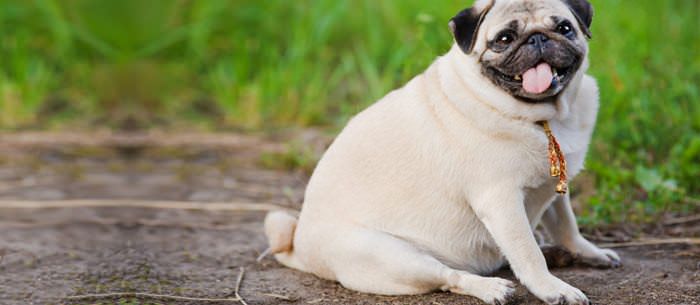At 24 pounds, Sam was — forgive the cliché — a fat cat. I used to tell his owner, one of my best friends, that he weighed four times as much as the six-pound laptops we had in college. Sam is no longer with us, God rest his little kitty soul. He died at the ripe old age of 16, relatively free of health problems. But thousands of other overweight animals face a host of weight-related issues.
Chubby can be cute, but it’s not healthy. Being overweight is a health risk for pets, just as it is for people. The American Society for the Prevention of Cruelty to Animals (ASPCA) notes that carrying around extra weight puts added stress on your animal’s body and increases his risk of diabetes, liver problems, and joint pain. Overweight pets have shorter life expectancies than pets at a healthy weight. (Sam was the exception to the rule.)
A pound of prevention
Your veterinarian should weigh your pet at every visit and note any changes in his weight. If the vet doesn’t do this automatically, request it and then talk to the vet about your animal’s ideal weight. You can then monitor your pet’s weight at home by weighing yourself and him on your own scale. (Obviously, this method works better for small dogs and cats. Holding a 70-pound Lab as you balance on the bathroom scale might be a bit much!)
There’s another simple way to tell if your cat or dog is overweight: Run your hands over his sides. Can you easily feel his ribs? That’s good. (But you shouldn’t be able to see his ribs: That means he’s underweight.) If you have to press through a layer of fat to feel the ribs, then your pet is packing too many pounds. You can also visually gauge your cat’s or dog’s weight by looking down on him from above: Check to see that he has a “waist” where his body narrows just before his hips.
Don’t overfeed
Remember your grandmother or great-aunt who showed her love with food? She’d pile a second helping of some homemade goodness onto your plate, saying, “Eat, eat!” Don’t do the same thing with your pet.
While it’s tempting to indulge your pet with table scraps or a handful of yummy pet treats, it’s not a good way to show love. A better way to pamper your pet is with nutritious food formulated for his specific needs — all in correct portion sizes, of course. Refer to the pet food packaging or ask your vet for help with how much is enough. If your pet tends to overeat, you have the power to control his portion sizes to help him slim down.
Exercise helps
Exercise is a great way to keep your pet healthy. Regular playtime also gives you an opportunity to bond with your pet. Walk your dog every day, play fetch, or see if he likes jumping for a FrisbeeŽ like those beach dogs I see on TV. Chase your cat around the house (if he likes that sort of thing), let him “hunt” a piece of string (under your supervision, of course), or try throwing little balls or toy mice for him to run after. (My friend who had Sam now has Marty the cat who plays fetch like a dog!)
Estimates for the number of overweight pets in the United States seem to run from 35% to 60%. Whatever the true number, don’t let your pet be part of that statistic. Keep your pet healthy, lower your veterinary costs, and enjoy your companion for years to come by training him to be trim.
Jennifer McGuiggan writes about pet care for Care.com and other publications. She has two cats and writes about them on her blog at thewordcellar.blogspot.com.
More Pet Care Resources
If you want to monitor your cat’s diet while you are on vacation, you should hire one of Care.com’s cat sitters. Our pet care providers can give you the peace of mind you need to know that your cat’s health will be watched and kept on track even if you aren’t home.
Never hired a pet sitter before? Read our Quality Care and Your Pet Caregiver Guide to get started!

